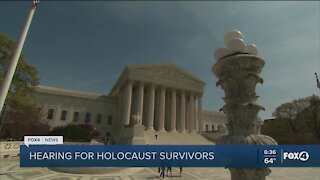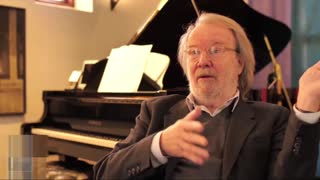Premium Only Content

1of3 Dean Irebodd: One Third of the Holocaust — Treblinka, Sobibor, & Belzec
1of3 Dean Irebodd: One Third of the Holocaust—A holocaust denial movie on subject of Treblinka, Sobibor, & Belzec
This documentary explains how the German wartime camps at Treblinka, Sobibor, and Belzec (all in Poland) were not death camps, as is usually claimed. It thereby debunks one third of the Holocaust. The movie asks questions like, "Would the Germans have really put a fence made out of tree branches around a deathcamp?" Answer: "Uh, no, that's silly." And would they have then conducted a huge burning operation inside this flammable fence?
This documentary was banned by YouTube. It comes in 30 episodes, with a total length of 4 hours 15 min.
Part 1 - 1-10
1) The death camps Treblinka, Sobibor, and Belzec made up nearly 1/3 of the holocaust. Episode 1 explains what they were.
2) On the map we see a water well surrounded by burial pits. The water well would have been contaminated. The storytellers didn't think of that.
3) If you're going to get off a train, and get gassed within the hour, and then thrown into a pit; what is the point of a haircut? Yet that's part of the story.
4) Engine exhaust seems like the best way to make carbon monoxide gas, if you're not a chemist, that is.
5) Wasn't the holocaust completely documented at Nuremberg? Yes it was. If you consider 20 minutes of courtroom time a thorough documentation of 1.5 million deaths.
6) We look at a model of the gassing building that supposedly killed nearly the population equivalent to San Francisco, and find it odd that the building entrance didn't even have a set of double doors.
7) The featured witness for Treblinka at the US Holocaust Memorial Museum says something very odd: that the Germans disguised the gas chambers as a kind of hair salon, complete with professional barbers. As he says: "...make to believe that they're getting a nice haircut."
8) A Treblinka witness at the Eichmann trial in 1961 makes some mistakes on the witness stand.
9) An article in February 1943 first brought the holocaust story to mainstream America. The article also mentioned six million--an uncanny number to throw out since the supposed fact hadn't happened yet.
10) Ridiculous experiments the Germans wouldn't have done. One of the most prestigious holocaust scholars writes: "Incendiary bombs were tried, but these caused large fires in the surrounding woods." Uh, o.k.
-
 0:35
0:35
WFTX
4 years agoHearing for Holocaust survivors
27 -
 1:28
1:28
CountingTheDays
4 years ago $0.01 earnedThe Third Commandment
139 -
 0:52
0:52
WXYZ
4 years agoFifth Third Foundation
35 -
 2:55
2:55
BenHamilton
4 years ago $0.01 earnedThird Year- "Vegetables"- Ben Hamilton
47 -
 1:38
1:38
choppyAir
4 years ago $0.04 earnedABBA - A Third New Song
136 -
 0:30
0:30
KTNV
4 years agoA third monolith discovered in California
230 -
 4:58
4:58
IOL-IndependentOnline
4 years agoThird China International Import Expo
16 -
 0:32
0:32
Newsy
4 years agoFacebook Cracks Down On Holocaust Denial
685 -
 1:30
1:30
CountingTheDays
4 years agoJESUS & The Third Commandment
20 -
 1:20
1:20
BANG Showbiz EN
4 years agoKelis welcomes third child
19